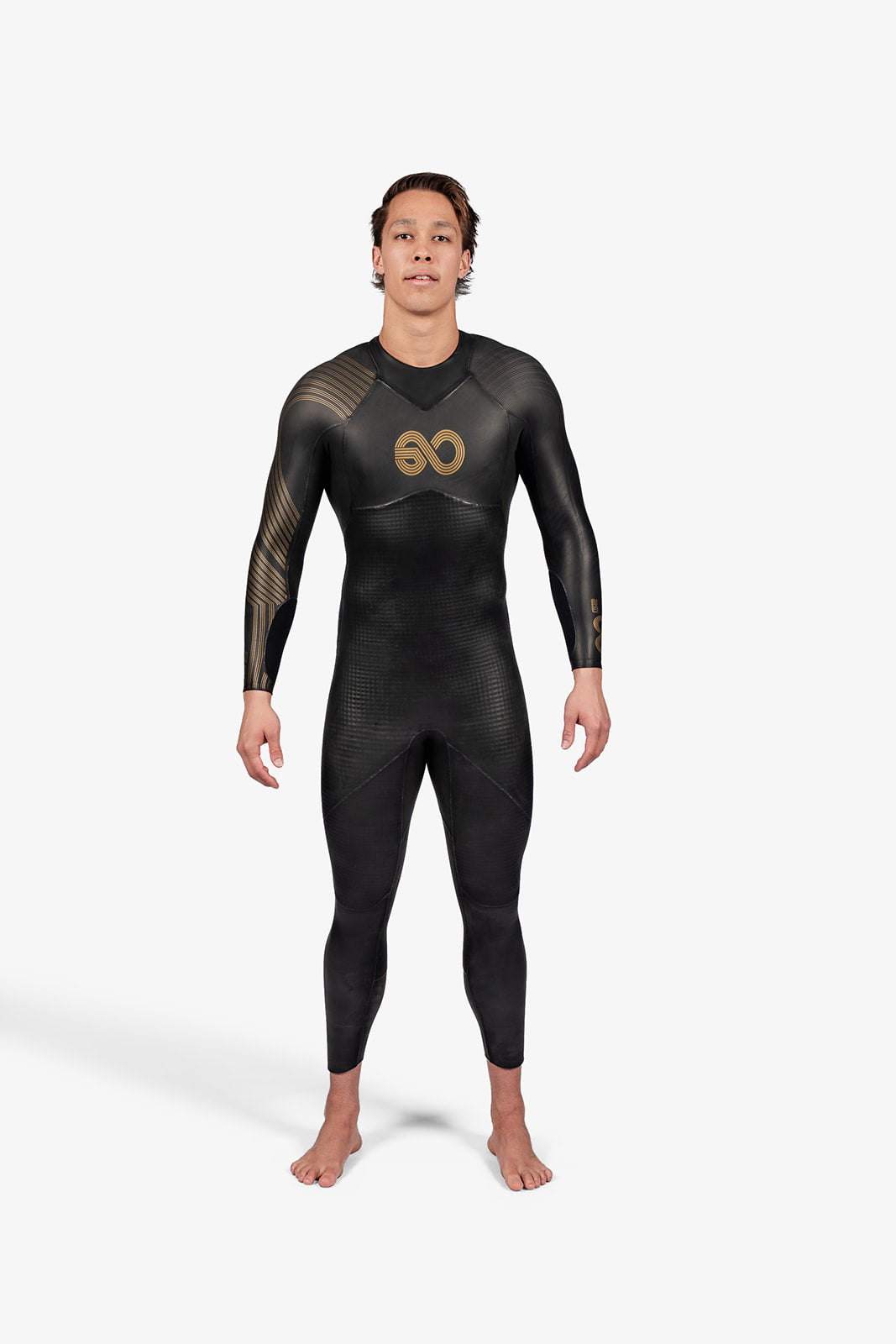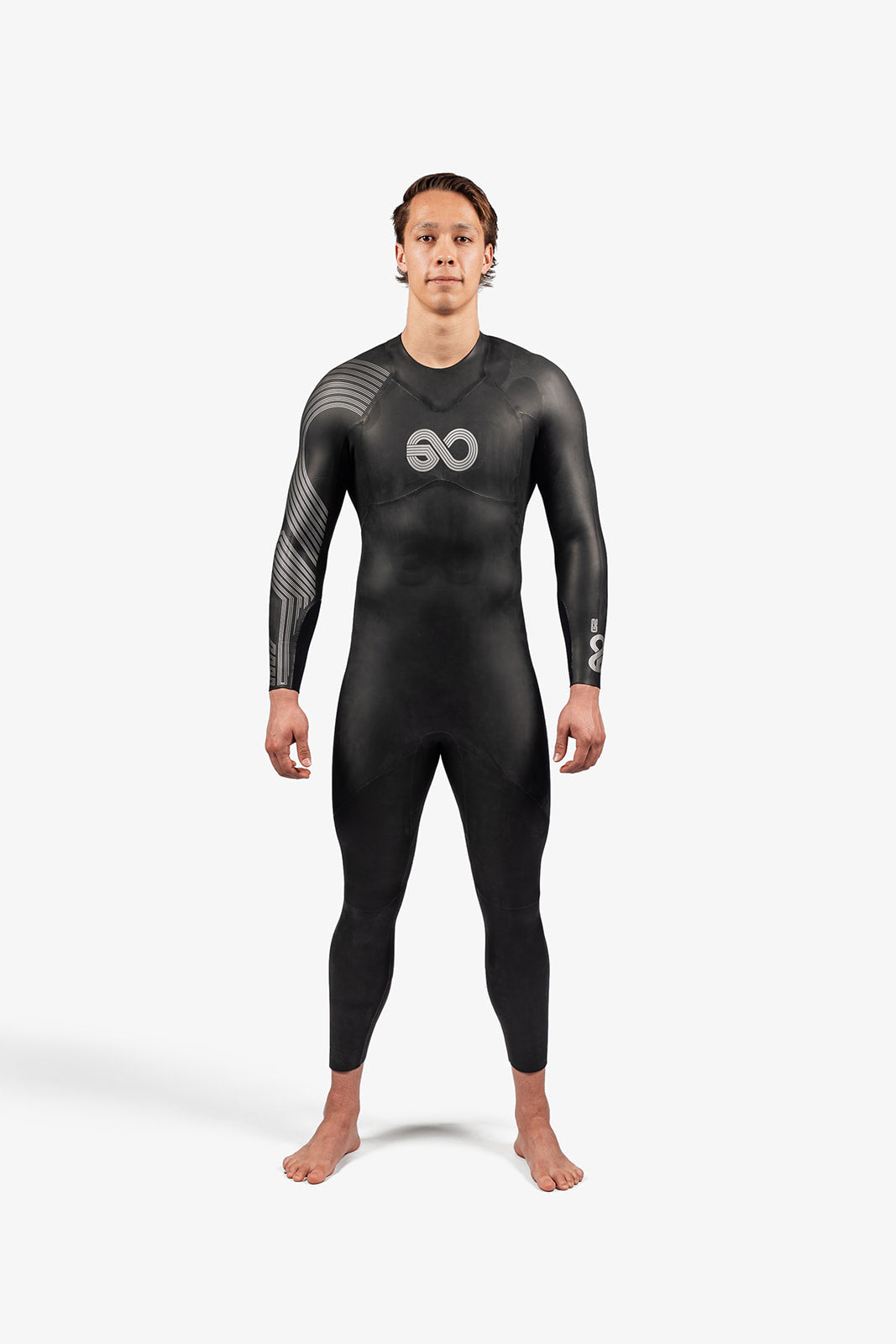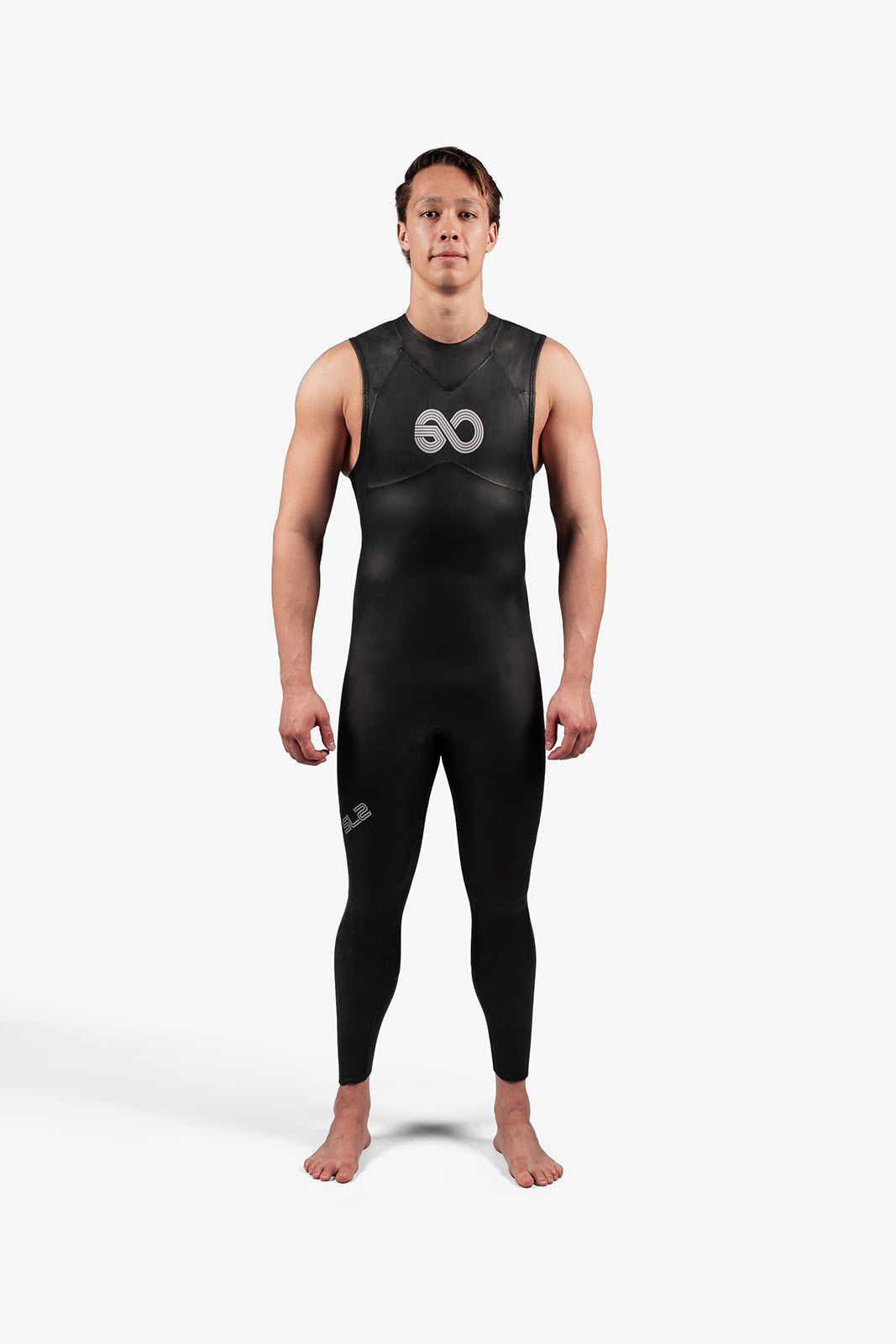Whether you are new to triathlon and have just purchased a brand new wetsuit or are looking to adapt your training for the next race in which a wetsuit is required, there are a few things you should consider.
Wetsuits and limits on range of motion
Long sleeve is the most popular variety of wetsuit, which is no surprise given how much faster they are due to the advances in technology and comfort. However, even the thinnest, most flexible neoprene still restricts shoulder mobility compared to swimming in just bathers even if only slightly.
The problem with a slight reduction in flexibility is that it requires more shoulder strength to get the arms in front to start each stroke, resulting in a lower stroke rate and faster onset of muscular fatigue. These challenges can be overcome through subtle changes in an athlete’s training program, potentially giving them a slight edge over competitors who have not targeted their training specifically to a wetsuit race.
Why long sleeve wetsuits are still superior
Restriction of the shoulders is not enough to outweigh the benefits of the increased buoyancy and warmth provided by the suit, so there should be no hesitation in deciding where or not to wear one. Furthermore, wetsuits provide greater benefits to weaker and less experienced swimmers. This is because experienced swimmers use their core to hold their body high in the water, whereas less experienced swimmers may not. Wetsuits help keep a swimmer’s body afloat, regardless of their core strength, and this added buoyancy greatly reduces frontal resistance and allows for greater speed through the water.
So if buoyancy negates the influence of body position in the water, and the wetsuit holds a swimmer’s core together for them, then effectively the only point of difference separating swimmers is the speed generated through the strength of their shoulders under restriction. This can be easily improved through the use of some basic resistance training and the use of training equipment.
Training the shoulders
The buoyancy benefits of a wetsuit can be mimicked in training by use of either a pull buoy or buoyancy shorts. The addition of large hand paddles will emulate the added resistance of the neoprene, lowering your stroke rate and preparing your shoulders for the extra work of a long sleeve wetsuit. It may also help to add some short sprints into your training – around 25m efforts with a high stroke rate – to assist you in preparing for changes of pace in races. It is important to note that a sharp increase in load and intensity on your shoulders increases the risk of injury, so it is best to be cautious and build up that kind of work gradually.
I utilised this training strategy in 2017, where I had retired from professional open water swimming the year prior but still wanted to compete in the Lorne Pier to Pub. The 1.2 km race is the largest ocean swim in the world, attracting over 5000 swimmers who all wear wetsuits due to the 18 degree water temperature.
I didn’t have the time to do 10 sessions a week as I had done previously, and my body position was sitting quite low in the water. Luckily, I knew my buoyancy issues would be alleviated by my wetsuit, so I knew all I had to do was incorporate lot of pull with paddles in my program to build my shoulder strength. I was only doing 3 one hour sessions per week, but was able to make it work because I focused on short, fast sets with lots of power work to ensure that I was able to hold a high stroke rate in a wetsuit.
The training definitely paid off, as I was able to hang within a few body lengths of the 2016 400m Freestyle Olympic Champion before catching a wave and securing victory in the run up the beach.
Sample training session
Below is an example training session that has been adapted from my 2017 training regime. It is sure to help any triathlete improve their swim leg performance before their next race.
Warm up
1 x 200 as 50 drill/50 swim
3 x 100 freestyle swim, descend effort 1-3
4 x 50 as 25 hard, 25 easy
Main set (pull buoy and paddles on 2 x below
2 x 200 solid pace with short rest
8 x 50 as 1 hard, 1 easy with 20 seconds rest
Warm down
1 x 200 easy choice
Total session distance = 2.8 km
If 2.8 km is beyond your capabilities, reduce the volume of the session but stick to the same principles of some moderate tempo with paddles mixed in with shorter bouts of speed. This kind of session performed consistently will set anyone up for success in an open water swim or triathlon in a wetsuit.



